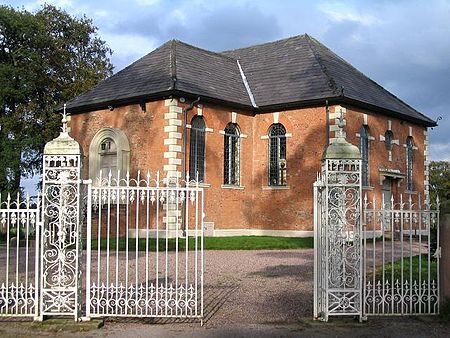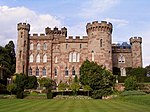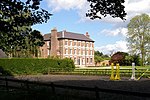Cholmondeley Castle is a country house in the civil parish of Cholmondeley, Cheshire, England. Together with its adjacent formal gardens, it is surrounded by parkland. The site of the house has been a seat of the Cholmondeley family since the 12th century. The present house replaced a timber-framed hall nearby. It was built at the start of the 19th century for George Cholmondeley, 1st Marquess of Cholmondeley, who designed most of it himself in the form of a crenellated castle. After the death of the Marquess, the house was extended to designs by Robert Smirke to produce the building in its present form. The house is designated by English Heritage as a Grade II* listed building.
The first formal garden was designed in the 17th century by George London. Following neglect in the 18th century, the garden was re-ordered by William Emes, who also created the landscape park. During the 20th century the garden was further developed under the care of Lavinia, widow of the late 6th Marquess. The park and gardens are listed Grade II in the Register of Historic Parks and Gardens. In the park and gardens are a number of other listed buildings. The most important of these is St Nicholas Chapel, which dates from the 13th century and contains much 17th-century furniture. It is listed Grade I in the National Heritage List for England. Standing across the main drive is a wrought iron screen and gateway made by Robert Bakewell in 1722 for the Old Hall and moved here in the early 19th century. This is listed as Grade II*. The other Grade II listed buildings include the altered remains of the Old Hall, five of the lodges in and around the estate and a variety of structures in the gardens.
During the Second World War, the house and grounds were used for a variety of military purposes which included a hospital. Until her death in November 2015, the house was occupied by Lavinia, Dowager Marchioness of Cholmondeley, mother of the present Marquess who lives in the other family seat, Houghton Hall in Norfolk. The house is not open to the public, but the park and gardens are open during the summer season. A variety of events are organised in the grounds and one of the lodges can be used as a holiday cottage.










